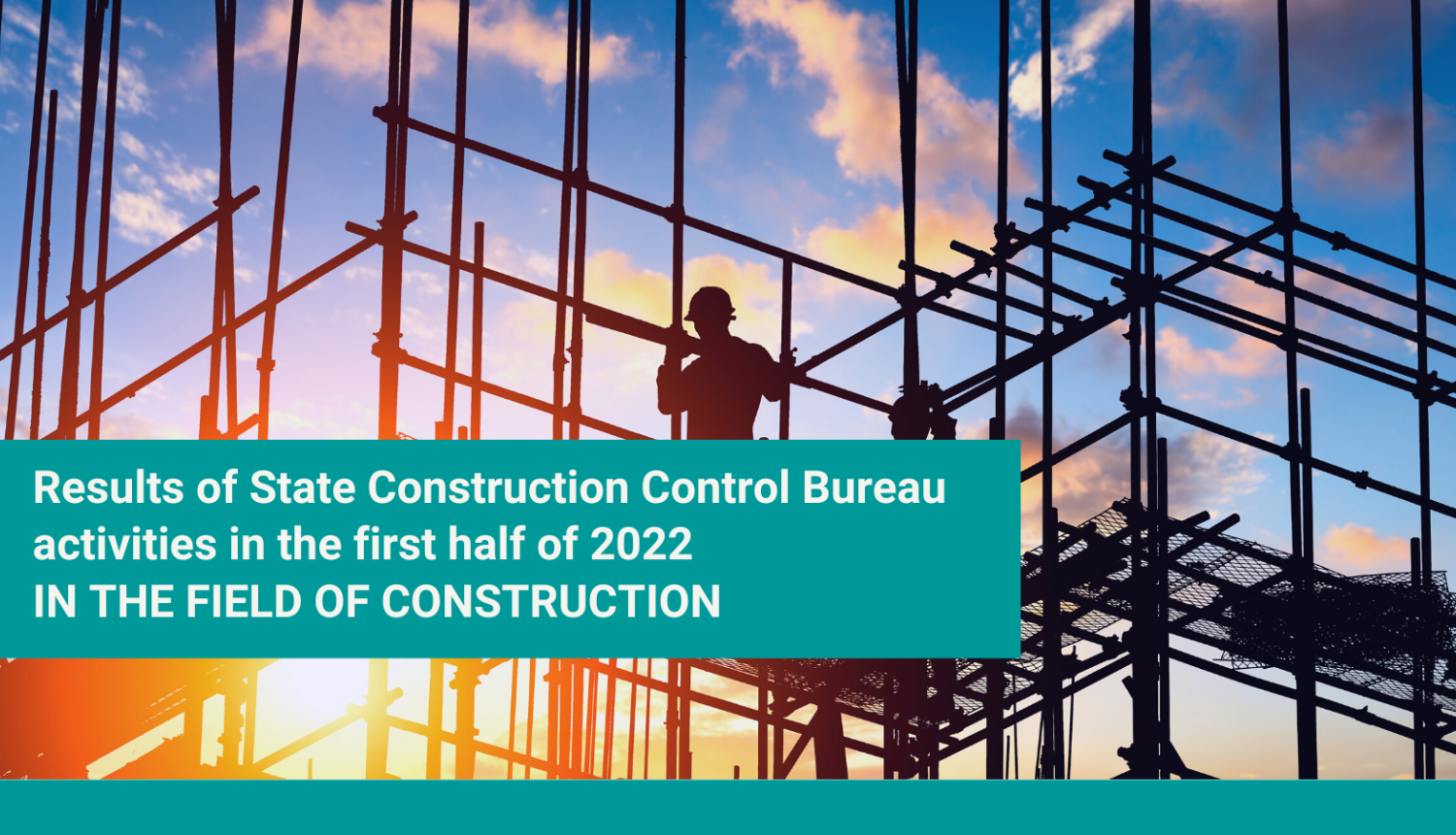In the first half of 2022, the State Construction Control Bureau (SCCB) continued with the course it had taken, performing the functions assigned to the institution, and fostering safety and quality in the field of construction. The Building Information System (BIS) underwent critical transformations, with significant steps taken to provide building owners with information enabling them to stay on top of property management processes, and to increase the quality of property management.
Construction and operation of buildings
In 2021, the SCCB gained the authority to supervise the construction of Group 3 public buildings requiring a building permit, buildings whose construction necessitates an environmental impact assessment procedure, and power transmission lines with the status of a national interest facility. The Bureau also supervises the construction of structures for the Ministry of Defence and its subordinate institutions, the National Armed Forces, and the Ministry of the Interior and its subordinate institutions, for construction within the national border security zone, patrol zone, and border sign supervision zone.
409 building inspection reports as part of the construction control effected during the reporting period. Of these, 371 pertained to the supervision of the construction carried out in the various sites, and 70%, or 258 of the cases, no violations were found. As part of its construction control activities, the Bureau conducted measurements in 29 cases, controlling the quality of concrete, steel, timber, and foundation structures, with 3 sites revealing deficiencies in their steel structures. At 6 sites, the construction control activities involved an in-depth assessment of the internal quality control system implemented by the participants of the construction process at the construction site, which is the next step towards the introduction of a new approach in supervision. We are moving from a traditional approach to construction control to system-based supervision that includes assessments of the internal control system used at the construction site, determining the ability of construction companies to deliver quality, to independently identify deficiencies, and to correct them in a timely manner.
SCCB monitors some 8,000 Group 3 public buildings in operation, and in the first half of the year, the Bureau worked on 531 building cases as part of supervising the operation of public buildings, including 192 physical inspections. An analysis of the reports prepared as part of the initial checks of the operation of the buildings shows that 46% of building owners still have not performed the scheduled technical inspections of their buildings. Current regulations require scheduled technical inspections of buildings to take place by 31 October 2024. The technical condition of buildings must be assessed at least once every 10 years for Group 2 and 3 public and multi-storey apartment buildings, and for Group 2 and 3 bridges, road flyovers, viaducts, pedestrian bridges, road culverts, tunnels of the second and third groups and retaining walls, the assessments must take place every five years. Given the limited capacity of construction specialists, we urge building owners to arrange a timely assessment of the technical condition of their buildings, especially since the deadline for scheduled technical inspections has already been extended. Also, a notable trend persists in terms of operating safety risks, as in 61% of buildings, the Bureau discovered operational hazards.
Under the general guidance of the Ministry of Economics, and with the participation of industry specialists, work has begun on the development of technical inspection guidelines in order to assist building owners and to pursue a uniform approach to technical inspections in buildings that meets regulatory requirements.
SCCB continues developing an algorithm for determining the risk level in building operation cases, with the goal of achieving a better process in building operation supervision.
Building Information System
The development of the Building Information System (BIS) continued in the first half of the year, and the most significant improvements are aimed at enhancing operational processes, and providing building owners with more control over building management processes, such as information on accumulated funds, income/expense reports, repairs conducted. Multi-storey apartment building managers have until 28 February 2023 to enter the Register of Building Managers and get access to their ‘house records’, as the presence of ‘house records’ in the system will be required starting from 1 March 2023. So far, 32 building managers have requested access rights, with the provision of access to 283 house records.
The number of BIS users in the first half of 2022 reached 104,538, a 38% year-on-year increase, which can be explained by the expansion of BIS functions. Most of the BIS users, 98,947, were public portal users. In order to promote familiarity with the use of BIS, 2,323 BIS users were trained and 61,038 consultations were provided on the use of the system in the first half of the year, meaning a rise of almost 20% more than in the same period last year.
The development of the BIS app is taking place at the same time. It will become a tool to support the users of the Building Information System, for quicker communication among stakeholders in the construction and operation of buildings, and the ability to receive notifications via a mobile device, as set by the user.
Certification of construction specialists
During the reporting period, the Bureau, in conjunction with industry representatives, began developing guidelines for the expert review of fire protection solutions in construction designs in order to improve the quality of these activities.



